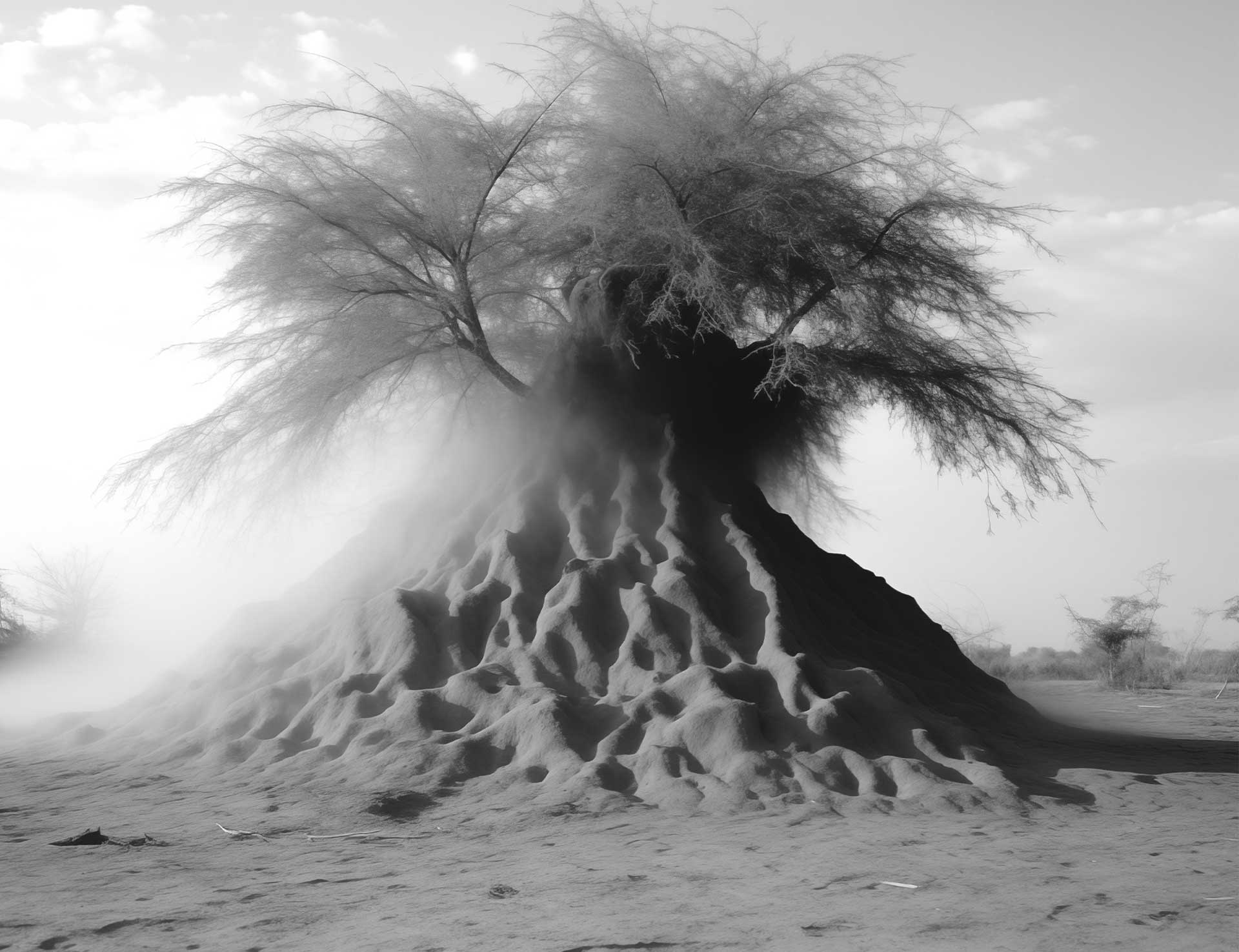
The Ecology of Protest: Bodies, Networks, and the Nature of Resistance in Serbia | Kaja Grujic
The seasons have shifted from the bitter cold of winter to the thick, unmoving heat of summer. Yet the student-led protests in Serbia against corruption and authoritarian rule show no signs of abating, now entering their ninth month. On June 28th, even in the sweltering heat, an estimated 140,000 people flooded into the capital for the Vidovdan Protest, turning the city streets into a pedestrian’s playground. The tide of bodies grew as friends and neighbors trickled in from the outskirts, merging into the bright, humming center of Slavija Square. Jokes about the failing government, once confined to Reddit threads and Instagram reels, spilled onto the streets, scribbled onto cardboard signs. After months of public cries falling onto deaf ears, people rallied behind the student organizers’ ultimatum to President Vučić: a call for an early parliamentary election.
Surrounded by thousands chanting, dancing, sweating, you forget where your body ends and another begins.
They say a single pebble tossed into a pond can ripple outward. But in moments like this, engulfed in a swell of energy, I don’t feel like a pebble—I feel like the pond. Expanding. Absorbing. Becoming part of something vaster than myself. That shared hum that passes between us feels like a heartbeat—ancient, collective, undeniable—finally puncturing through an apolitical numbness that has settled over Serbia for years.
The initial spark for the protests came last November, when a newly renovated railway canopy collapsed in Novi Sad, killing sixteen people. Officials denied that the incident had occurred due to renovations, but photos and records told another story. What first appeared as a tragic accident soon revealed a deeper truth: people were dying beneath the weight of a system rotted by corruption and cronyism.
What followed was not just outrage but awakening. University students across the country began organizing en masse, not under a single party or banner, but through spontaneous, decentralized networks of solidarity. Entire campuses shut down in protest. Over 60 of Serbia’s 80 universities entered full blockades, with marches rippling outward across the country and beyond its borders, reaching as far as Brussels and Strasbourg. Public sector workers joined with rolling boycotts. Month by month, the crowds grew bolder, and the silence that once protected power began to crack. In a country long dominated by top-down control, these students offered something radically different: a living example of how grassroots organising can push back against the machinery of authoritarian rule in real time.
“I felt like we were a sea of stars…one big superorganism.”
And yet, what struck me most wasn’t just the strategy—it was the language. Speaking with students during the protests, I kept hearing the same metaphors echo again and again: “I felt like we were a sea of stars…one big superorganism.” The more I heard them, the more I began to wonder, what do these metaphors reveal about how we feel protest in our bodies? What if protest is not only an act of resistance but of reverence? There is something deeply ecological in the way bodies come together in public space, like a murmuration, a tide, or a mycelial network.
Take the murmuration, for example—a breathtaking phenomenon in which thousands of starlings sweep across the sky, moving as if with one mind. Triggered by the threat of a predator, the flock shifts shape in seamless coordination, forming dense, fluid patterns that disorient attackers and make it nearly impossible to isolate a single bird. Experts aren’t exactly sure how it works, but they’ve found that a murmuration is driven not by each bird responding to the whole, but by responding to its seven closest neighbors. The flock has no single leader. It isn’t choreographed. And yet from this simple rule, a miraculous kind of order emerges: ripples of motion, pivots of direction, and patterns that protect and adapt.
As the protests unfolded around me, I began to see the same in us too. No single voice directing the crowd. A student chants, and others respond. Someone lifts a flashlight to the sky, and suddenly, hundreds of thousands follow, like a bioluminescent tide rolling in. Whistles spark from one corner and echo across the square, call and response rippling like sonar. From within, it might feel disordered. But from above, captured by drones hovering over a city on its feet, it moves with eerie cohesion.
What do these metaphors reveal about how we feel protest in our bodies? What if protest is not only an act of resistance but of reverence? There is something deeply ecological in the way bodies come together in public space, like a murmuration, a tide, or a mycelial network.
Movements like these have come to feel, to me, like living ecologies. Something that transcends any single individual and becomes something entirely new. Fluid. Fierce. Seemingly alive.
The murmuration is just one model. Another is the mycelial network, the vast, underground fungal systems that allow forests to communicate, adapt, and nourish one another. As biologist Merlin Sheldrake writes in Entangled Life, “mycelium is ecological connective tissue, the living seam by which much of the world is stitched into relation.” In other words, it forms a decentralized, reactive, intelligent system of interdependence. In moments of rupture, forests don’t rely on hierarchy but on this rich connected web.
These ecological systems suggest that collective intelligence doesn’t always require a center, a leader. But when enough interconnections form, when feedback loops ripple outward and begin shaping a whole, a new question arises: could a protest, then, be considered a kind of superorganism?
The term “superorganism” gained prominence in the 1970s, when scientist James Lovelock introduced the Gaia Hypothesis, a bold scientific and philosophical idea suggesting that Earth operates as a single, living, self-regulating system. In his early writings, Lovelock described the planet as an immense organism composed of many smaller, interdependent systems all collaborating to sustain conditions necessary for life. These components, he argued, don’t merely coexist; they interact in ways that benefit the whole.
In many ways, protest movements seem to mirror this: spontaneous yet intelligent, decentralized but attuned, rooted in mutual perception. An emergent system of resistance pulsing with life with seemingly one goal in mind.
But as science writer Ferris Jabr reminds us, this metaphor may be too simple. “Earth is not a superorganism—it’s vastly more complex. Our planet is not composed of the cooperating members of a single species, nor even of a single biome—it’s a massive ensemble of all existing ecosystems, which are themselves intricate networks of the living and nonliving. Earth is not so much a superorganism as a metaecosystem.” Lovelock’s vision is too elegant, too tidy. The biosphere may be shaped by symbiosis, but it is also sustained through rupture, decay, and brutality.
So too with protest.
Romantic metaphors—whether of nature or revolt—can obscure the necessary presence of tension, contradiction, and risk.
Even when a movement appears unified, even when its chants rise as one voice, we must be cautious of the comforting story that collective action is always unified, righteous, and protected.
During one protest, I spoke with Vera, a pharmacy student, who reflected, “You look at these huge masses of people and you’re left in awe of their beauty and strength. But if you look closer, you see thousands of individual souls, each with their own story, their own future.” And when you look even closer, that illusion of singularity fractures further. Within the crowd are clashing desires and diverging visions of what Serbia is and what it could become. Yes, many are marching towards the same goal—but how they believe we should get there, and why, differs wildly.
To describe a protest as a singular organism is to risk flattening that complexity—just as Gaia’s metaphor, which, when taken too literally, can obscure the brutal contingencies of the natural world. A movement is not a monolith. It cannot be defined by harmony alone. They are alive because they are unresolved—held together not by sameness, but by relation. The ecology of protest is not neat. It’s messy, layered, and plural, and all the more powerful because of it.
As writer Anne Borrie puts it, “These stories feed a collective craving for moral clarity, courage, and hope. The media sells rebellion through romanticising resistance while governments criminalise protest. The myth that resistance is always noble and protected is shattered by the reality that those who resist in real life are often punished, isolated, or erased.”
The protest on June 28th was a perfect example of that illusion beginning to fracture. Even amid the joy of coming together, there was unease. Tension clung to the air all day. I kept glancing over my shoulder, scanning balconies for stones, sticks—anything that might signal a repeat of the violence I’d seen in past months. Whispers passed through the crowd about party-affiliated instigators sent to spark chaos. When the crowd paused for sixteen minutes of silence to honor the lives lost in the Novi Sad collapse, the stillness was almost unbearable. We feared the government might once again turn on its people, as it had in March, when an alleged sonic cannon was used on peaceful demonstrators.
As the protest ended, the organizers addressed the crowd with a charged statement: urging Serbians to “take freedom into your own hands” and giving them the “green light.” Later, they posted to Instagram:
“The authorities had all the mechanisms and all the time to meet the demands and prevent an escalation. Instead, they opted for violence and repression against the people. Any radicalization of the situation is their responsibility.”
That night, police stormed the crowd, firing tear gas and boxing protesters in. Skirmishes broke out near Vučić’s loyalist camp. Dozens were hospitalized. In the days that followed, students were arrested en masse. Reports and images of police brutality spread like smoke.
Now, in cities across Serbia, the movement has splintered into smaller flames. In place of mass rallies, roadblocks rise organically, organized by neighborhood assemblies, pulsing with improvisation. In one moment, you see police striking citizens with batons as they hold their hands in the air. In the next, neighbors dance under stacked speakers, children chalking hopscotch across major intersections. In certain districts, echoes of the French ’68 student revolts appear: couches, cabinets, and trash bins barricading entire streets from police.
There is grief. There is chaos. And still, there is joy in the strange, stubborn beauty of collective action.
Anna Tsing writes in The Arts of Living on a Damaged Planet of the unexpected ecologies that emerge in the ruins of capitalist collapse. Protest, too, is a kind of ruin ecology. Like fungal spores blooming in blasted landscapes, these movements don’t wait for perfect conditions. They grow in the cracks of broken systems, in the aftermath of violence and repression. What we’re seeing in Serbia is not just resistance, but regeneration: couches turned barricades, silence turned signal, and grief turned choreography.
Tsing urges us to stop looking for singular narratives and instead attend to “patchy landscapes” – zones of entanglement, where multiple species, histories, and futures collide. Protest, like nature, is not one cohesive whole. It is a tangle of misalignments, irreconcilable hopes, shifting intentions. In this way, protest is not only a rejection of decay, but a practice of survival within it. A reminder that even in collapse, something vital—even if incongruous—can take root.




